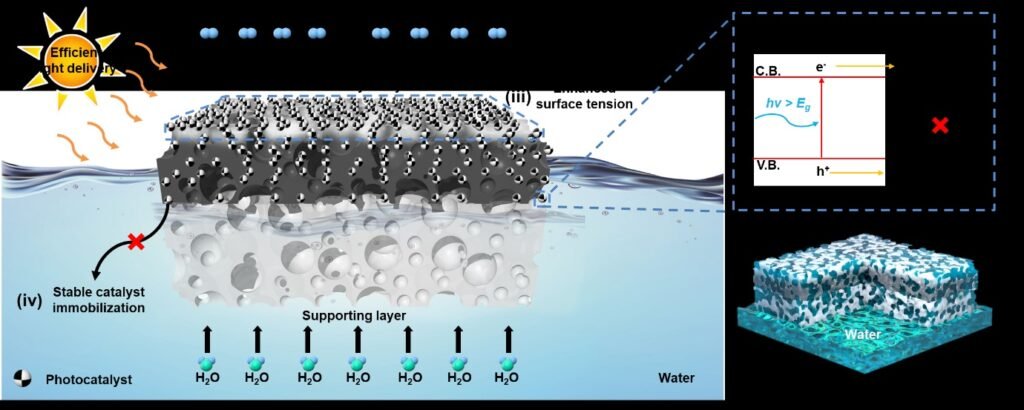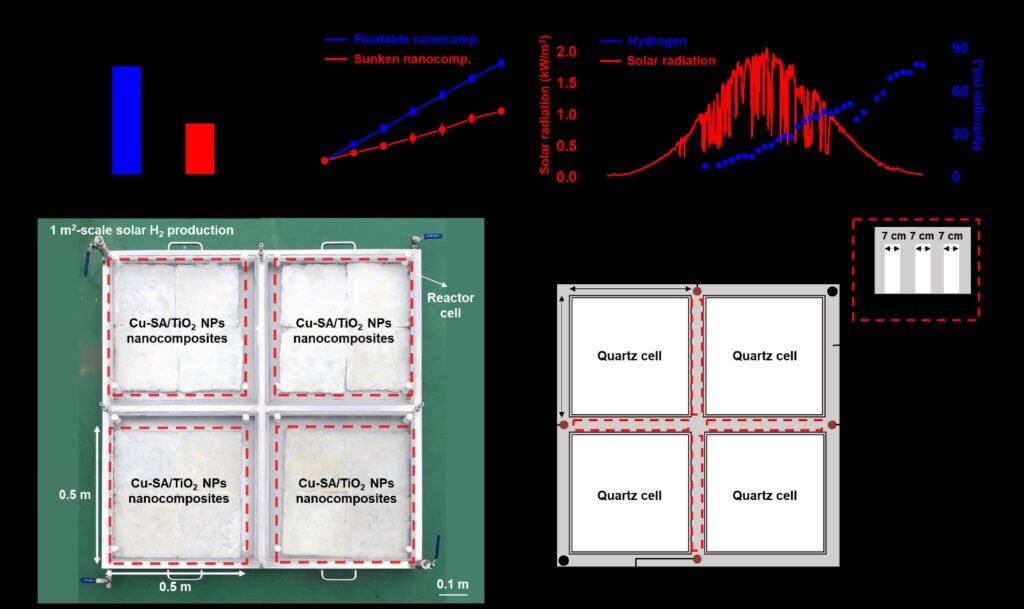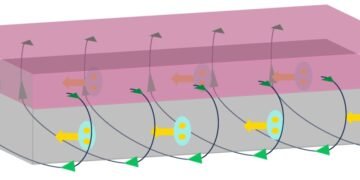A newly developed nanocomposite hydrogel for large-scale hydrogen production. New type of Photocatalytic Floating Platform of Hydrogel Nanocomposites succeeds in hydrogen evolution reaction, even using waste plastic.
A researcher of Prof. HYEON Taeghwan leads the Nanoparticle Research Center of the Institute of Basic Sciences (IBS) in Seoul, South Korea, has developed a new photocatalytic platform for the production of hydrogen.
This group’s study on the photocatalytic platform has led to the development of a floating photocatalytic matrix, which makes the hydrogen evolution reaction more efficient with obvious advantages over the hydrogen production platform as a kind of material film or panel.
The need for alternative energy has increased recently due to global challenges such as environmental pollution and climate change. Among many people looking for alternative energy sources, hydrogen energy produced by photocatalysis is particularly highlighted for its production of sustainable green energy.
For this reason, a lot of research and development has been done to improve the internal reaction efficiency of photocatalysts. However, research on the nature of the photocatalytic process, which is important for their practical application and commercialization, has not been thoroughly investigated.
Often, the current methods put powder or nanoparticles on different surfaces, such as sheets, films, and flat platforms, which are submerged under water. They also face practical problems such as leaching, poor mass transfer and backlash. They also require additional devices to separate and collect hydrogen from water, which adds complexity to the device and increases cost.
The team at the Nanoparticle Research Center within IBS, led by Professor Hyeon, has developed a new type of floating photocatalytic platform for efficient hydrogen production. This new layer has a bilayer structure, which consists of a high photocatalytic layer and a low support layer (Figure 1A). Both layers are porous structural polymers that provide surface tension to the platform (Figure 1B). In addition, the platform is made in the form of cryo airgel, a solid material filled with gas inside, with a low density.

As a result, the elastomer-hydrogel embedded in the photocatalysts can float on water (Figure 1C). This platform has a clear advantage in photocatalytic reaction evolution: first, light attenuation by water is avoided, resulting in efficient conversion of solar energy. Second, the product, hydrogen gas, can easily diffuse into the atmosphere, avoiding oxidation reactions and maintaining high reaction yields. Third, water can be easily supplied to the organic material within the elastomer-hydrogel matrix due to its porosity. Finally, the catalysts are immobilized in the matrix for long-term operation without leaching problems (Figure 2).
The researchers experimentally demonstrated the high hydrogen evolution efficiency of the floating platform, compared to that of the submerged platform (Figure 3A, B). In addition, the scalability of the platform, which is important for production efficiency, is also demonstrated under sunlight. It has been confirmed that about 80 ml of hydrogen can be produced by a floating photocatalytic platform using one atom of copper and titanium oxide catalysts in an area of 1 m2 (Fig. 3C -E). Even after 2 weeks of work in water with different components and floats, the hydrogen evolution performance of the platform is not impaired.

Professor Kim says, “The proposed platform can produce hydrogen from a solution that dissolves household waste, such as polyethylene terephthalate bottles. Therefore, the platform can be a solution for waste recycling, which helps society interact with the environment.
Clearly, this study presents a comprehensive platform for efficient photocatalysis that is not limited to hydrogen production. It is possible to replace the catalytic part for different uses that are required, without changing the characteristics of the airgel floating platform as a whole.
This promises a broad acceptance of the platform and other photocatalytic reactions, such as oxygen evolution reactions, hydrogen peroxide production, and the generation of various organic compounds.
“This study makes great progress in the field of photocatalysis and shows the potential of green hydrogen production in the ocean and the efficiency of the planet.
The unique material properties, high performance and great speed in the field of photocatalysis of our platform will open up a new chapter in the next energy,” said Professor Hyeon.
Source: Institute for Basic Science (IBS)




































